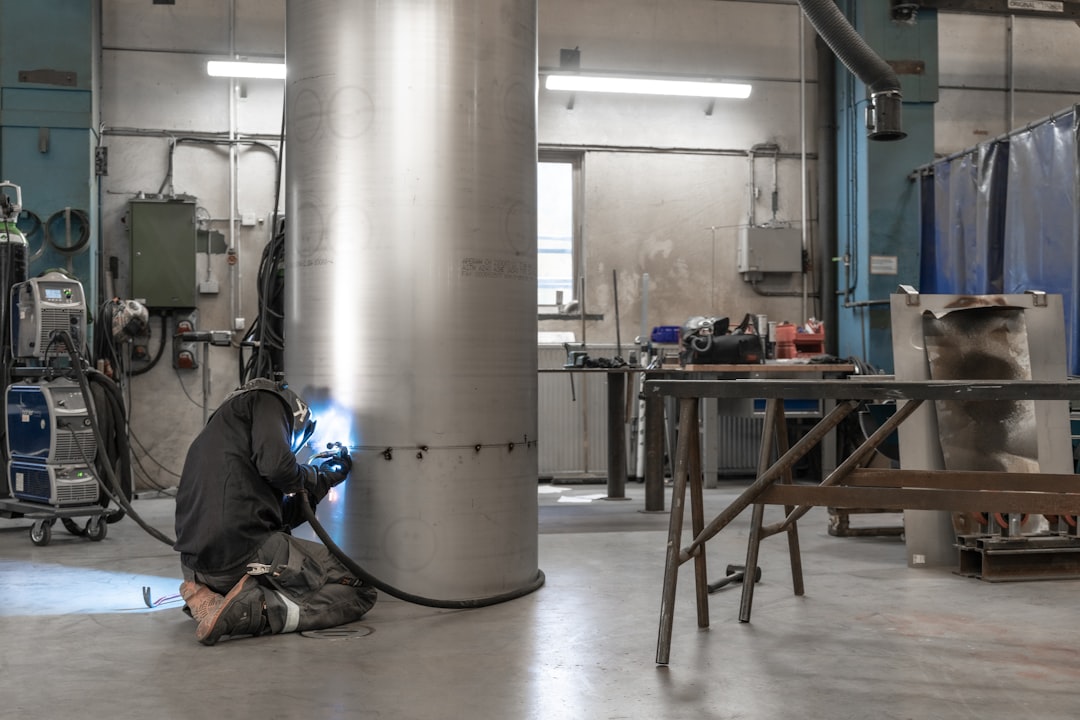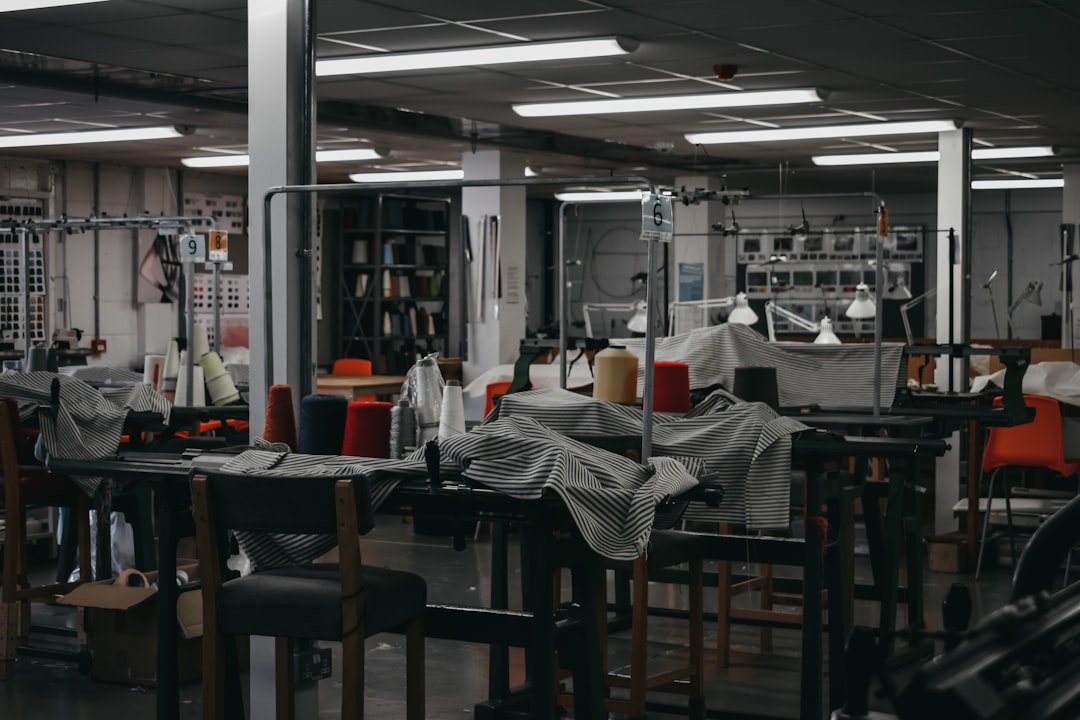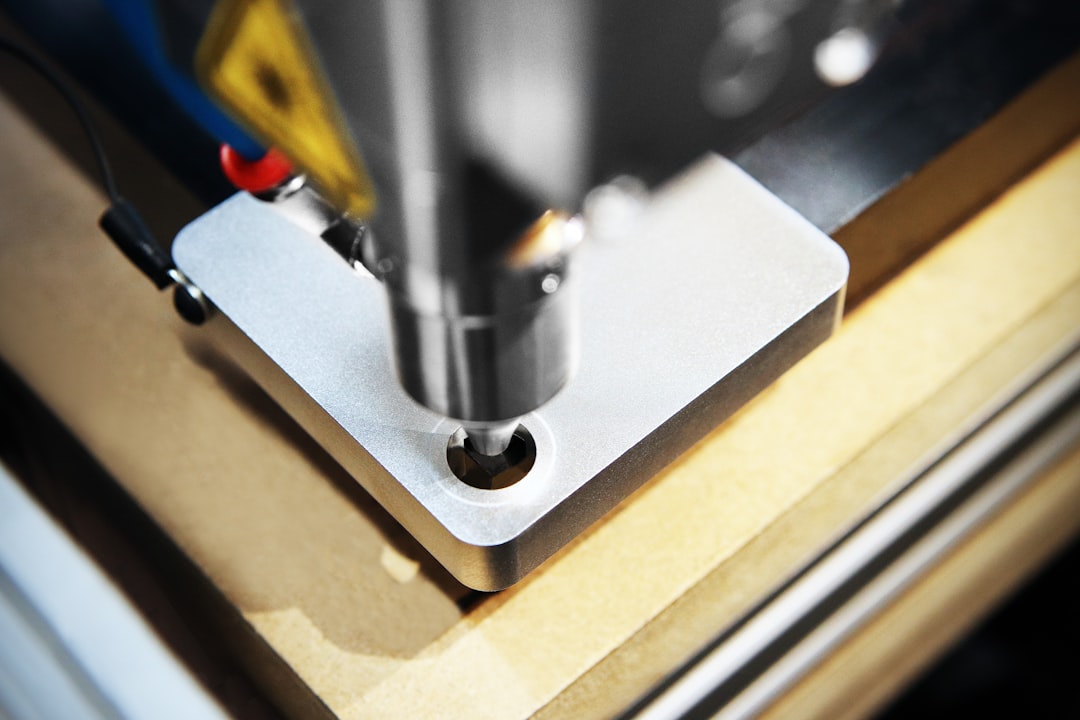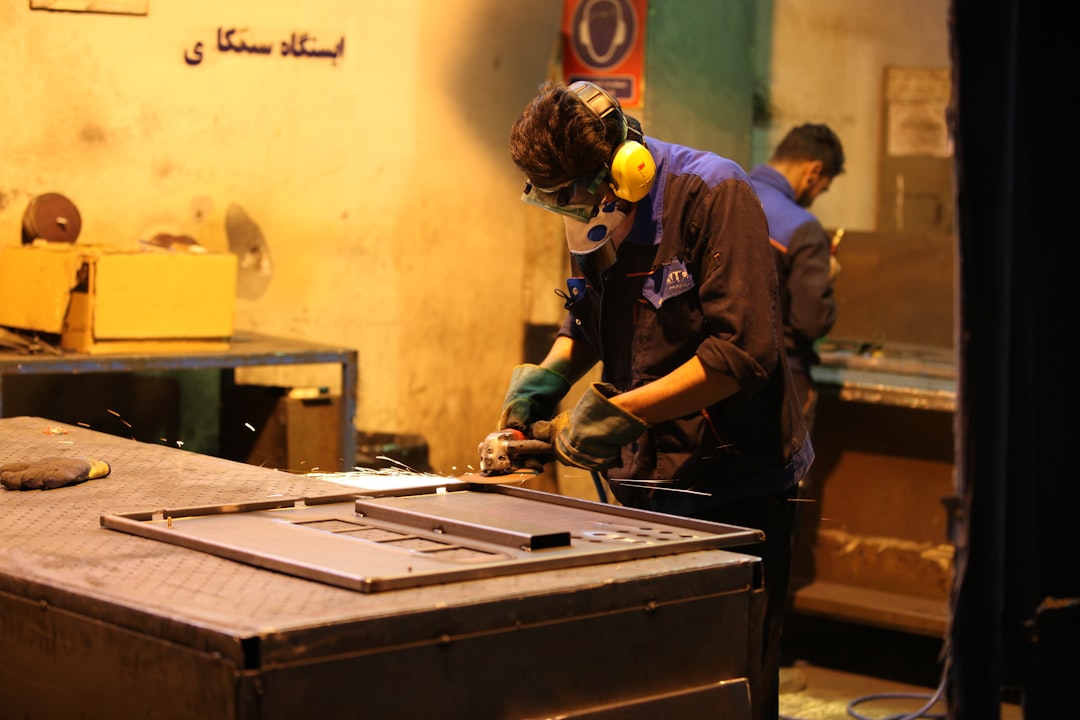

Engage prospects with a scan and streamline customer engagement with FREE QR code marketing tools by Sona – no strings attached!
Create a Free QR CodeFree consultation

No commitment

Engage prospects with a scan and streamline customer engagement with FREE QR code marketing tools by Sona – no strings attached!
Create a Free QR CodeFree consultation

No commitment
In countertop fabrication, buyers increasingly expect quick, personalized information with minimal friction. They want to compare materials, view finished projects, understand installation steps, and estimate costs long before they speak with a salesperson. Traditional tools such as static brochures, paper spec sheets, or generic signage rarely meet those expectations. They also fail to capture intent or enable timely follow-up, which causes high-fit prospects to slip through the cracks.
QR codes bridge that gap by connecting physical environments to rich digital experiences at the exact moment of curiosity. When a shopper scans a code on a quartz sample or a showroom display, they can jump straight to galleries, material specifications, pricing guidance, or a quote request form. At the same time, your business gains visibility into what people care about, which assets drive engagement, and which channels deserve more investment. The result is a smarter, more educational journey for the customer and a more efficient, data-informed pipeline for your team.
By deploying QR codes strategically across high-intent touchpoints, countertop fabrication companies can modernize lead capture, segment audiences by interest, and guide buyers toward conversion. This guide lays out practical tactics for planning campaigns, placing codes, tracking outcomes, and integrating with your marketing stack, so you can turn every scan into a measurable step toward revenue. Explore the Sona QR use cases.
Educating buyers while capturing quality leads is a balancing act for countertop fabricators. You want to answer detailed questions about materials, edge profiles, seams, and timelines without forcing a commitment too early. This is where QR codes shine. They allow you to deliver the right content at the right moment inside showrooms, at installation sites, and across print campaigns. Visitors can explore at their own pace, and your team can track which topics and assets resonate most.
Replacing analog processes with QR-powered experiences reduces friction and improves outcomes. Printed brochures can be replaced by regularly updated landing pages, paper estimate forms by mobile quote requests, and manual sign-in sheets by simple scan-to-book experiences. When codes are tied to dynamic pages, you can keep content fresh without reprinting materials, and you can measure which placements and messages produce downstream actions such as appointments or sales inquiries.
Key considerations include:
Sona QR supports each step of this transformation. Generate dynamic codes, update destinations post-print, track scans by context, and sync activity to HubSpot or Salesforce for timely, informed follow-up. This workflow replaces guesswork with real-world data while giving buyers immediate answers in a format they prefer. Start creating QR codes for free.

Countertop showrooms are dense with visual and tactile information, yet shoppers often leave without a digital follow-up path. They compare quartz and granite, snap photos, and discuss finishes with family members at home. If there is no easy way to save materials, request a quote, or revisit a gallery from those photos, interest fades and competitors can capture the next step. QR codes provide that onramp by turning displays, samples, and paperwork into interactive touchpoints that connect to your digital ecosystem. See countertop marketing tips.
The benefits compound for teams as well. With QR analytics, you can see which materials, displays, or campaigns drive engagement, and you can adjust inventory, messaging, and follow-up accordingly. Instead of relying on anecdotal feedback or manual logs, you get a real signal on what buyers want and when they are ready to talk. That shift from passive to active tracking improves lead quality, reduces follow-up gaps, and supports better allocation of marketing spend.
When applied thoughtfully across the buyer journey, QR codes deliver both customer value and business intelligence. They make it seamless for prospects to act on interest and simple for your team to connect activity to outcomes.

Different moments in the countertop journey call for different QR code formats. Some formats are ideal for delivering content, while others are designed to capture contact information or trigger a conversation. By selecting the right format and destination, you improve both scan rates and follow-through. If you need a refresher, see how QR codes work.
For fabricators, the most useful formats typically align to education, booking, and post-install care. Galleries and spec pages meet early research needs, forms capture quotes and appointments, and vCards or messaging codes give people a fast path to a person when they need answers.
With Sona QR, these formats can be created and managed centrally. Dynamic codes allow you to maintain evergreen print assets while evolving the digital experience behind them, and scan analytics help you refine formats and destinations over time.

The most valuable placements are the places where buyers evaluate materials, make decisions, or seek help. In those moments, small amounts of friction can derail action. QR codes reduce that friction by providing clear calls to action and a direct digital path. They also help you measure which physical placements are working hardest so you can scale best performers and retire weak links.
Think in terms of intent density. Displays, samples taken home, and post-install packets all represent moments when people are either choosing a product or learning to take care of it. Code those surfaces first, then expand to advertising channels and trade partnerships so you can capture attention beyond the showroom. Consider sturdy acrylic QR displays for high-traffic areas.
These placements convert attention into action while revealing which surfaces and messages produce revenue. Over time, you will build a clearer map of the buyer journey and a stronger playbook for investment.

QR codes provide immediate, context-aware value when matched to common customer interactions. The following use cases demonstrate how to support education, accelerate booking, and strengthen aftercare with measurable outcomes at each step.
In the showroom, QR codes help prospects navigate a complex set of choices. Instead of waiting for a representative or juggling brochures, customers can pull up specs, compare durability and maintenance requirements, and even visualize edge profiles on their phones. That convenience raises confidence in the buying decision and keeps your brand top of mind when they review options at home.
After installation, QR codes extend the relationship through education and feedback. Help new owners care for their investment with simple guides, then invite reviews or referrals with one click. This approach turns project completion into a springboard for repeat business and word-of-mouth growth.
Each use case contributes to a connected experience that educates buyers and gives your team actionable insight into who is ready for the next step.
Every scan contains context such as location, timing, and content interest. By placing unique QR codes across surfaces and journey stages, you can automatically segment your audience and tailor follow-up. Instead of generic drip campaigns, you will deliver messages that reflect what each person has actually viewed, requested, or completed.
Start with journey-aligned tags. If someone scans a code on a marble comparison display, they should receive different follow-up than a homeowner who scans a post-install care code. Similarly, scans from trade shows can be segmented for event-specific offers or follow-up appointments. Feeding these segments into your CRM and ad platforms unlocks email, SMS, and paid media that match user intent. See the Sona retargeting playbook.
For countertop fabricators, helpful distinctions often include homeowners versus builders, quartz versus natural stone interest, and pre-purchase research versus post-install ownership. These signals guide tailored follow-up that feels relevant and timely instead of generic.
QR codes tie every offline asset back to your digital marketing engine. That means your brochures, van wraps, and event signage no longer live in a measurement black box. Instead, each touchpoint is a trackable entry point to your funnel with a clear path for follow-up. This clarity helps you shift budget from low-impact placements to the channels that reliably create pipeline.
To maximize results, match each channel to a destination that fits user context. A showroom placard is ideal for deep dives into material specs, while a van wrap should point to a short, mobile-friendly booking page. Consistency of branding and calls to action across these placements reinforces trust and keeps the experience simple.
Sona QR centralizes code creation, destinations, and analytics, which ensures consistency across channels and simplifies reporting. As you scale, you will know which assets deserve more investment based on real engagement and revenue.
A structured rollout helps teams move quickly while avoiding common pitfalls. Before you design the code or print signage, define the outcome you want and how you will measure success. Then, choose dynamic QR codes for flexibility, test thoroughly in context, and keep improving based on what the data shows.
Treat this checklist as a repeatable playbook. Run it for showroom updates, seasonal offers, event activations, or post-install programs. Over time, your organization will build a library of proven QR assets with reliable performance data and streamlined integrations.
Start by clarifying exactly what you want the scanner to do. If your goal is education, your destination might be a stone comparison page or a gallery filtered by color and edge profile. If the goal is revenue, your destination should be a booking or quote form that captures project details needed for a fast follow-up.
The type of code you choose affects your flexibility and data. Static codes are fine for unchanging assets, but dynamic codes allow you to change destinations as campaigns evolve and give you rich analytics.
Well-designed codes perform better. Clear visual framing, benefit-driven calls to action, and brand consistency communicate value. Testing in real conditions ensures scannability and avoids surprises after you deploy.
Deploy where intent is strongest and the cost of a missed opportunity is highest. Prioritize surfaces that influence decisions and placements that extend the conversation after a visit.
The first version of any campaign is a hypothesis. Use analytics to confirm assumptions, identify drop-offs, and iterate quickly. Small changes to CTA language or placement can yield meaningful improvements.

QR codes are only as valuable as the actions they inspire and the outcomes they produce. High-performing programs measure the entire chain of events from scan to booked appointment to closed revenue. By instrumenting every step, countertop fabricators can prove the impact of print collateral, showroom layouts, and event investments with confidence.
Modern QR platforms extend far beyond basic scan counts. With Sona QR, you can capture time, device type, location, and campaign source, then push that data to your CRM. Sona.com adds multi-touch attribution and identity resolution so you can connect anonymous scans to known buyers and map their progression across channels. This visibility allows you to budget based on performance rather than assumption.
When teams see the relationship between physical interactions and digital outcomes, they invest with precision. That discipline compounds return on spend and keeps your marketing aligned with the way customers actually buy.
Operational excellence turns QR from a tactic into a growth engine. Start with consistent tagging, clear CTAs, and strong follow-up automation. Then, create a rhythm of testing and iteration so each campaign gets a little better than the last. The goal is not just more scans; it is more valuable actions that move buyers forward.
Train your staff to promote scanning by explaining the benefit to the shopper. If customers know that a code unlocks care guides, price ranges, or a fast booking link, they are more likely to engage. Over time, customers will come to expect that your surfaces are gateways to value, not just static displays.
A unified platform like Sona QR makes these best practices scalable. Central management and CRM integrations reduce manual effort while ensuring no signal gets lost between scan and sale.
QR codes are more than a convenience for countertop buyers. They are a strategy for turning every surface in your showroom and every piece of print collateral into a digital entry point. By connecting offline curiosity to online education and action, you build a journey that respects how people research and decide.
For fabrication services, the payoff is significant. You capture more qualified leads without adding friction, tailor follow-up based on proven interest, and show exactly which displays, samples, and campaigns drive revenue. With dynamic codes and centralized analytics, you can update experiences without reprinting and attribute results with clarity.
If you are ready to modernize customer education and lead engagement, start with one or two high-impact placements such as your most visited displays and your take-home samples. Use Sona QR to generate dynamic codes, design benefit-driven CTAs, and sync scan data to your CRM. Expand to post-install packets and direct mail once you have momentum. Each scan will deliver insight, and each iteration will sharpen your playbook.
The countertop market rewards clarity, speed, and relevance. QR codes make those qualities possible at scale, transforming anonymous interest into measurable growth while giving customers the educational experience they expect.
QR codes have transformed countertop fabrication services from basic informational tools into powerful customer education and engagement channels. By integrating QR codes, fabricators can seamlessly provide detailed product information, installation guides, and maintenance tips—empowering customers with knowledge that builds trust and confidence. Imagine your clients instantly accessing personalized countertop care instructions or design inspirations right at their fingertips, enhancing their experience and boosting satisfaction.
With Sona QR, you can create dynamic, trackable QR codes that update in real time—no need to reprint materials for every change. Monitor which codes engage customers most, gather actionable insights, and connect every scan directly to increased customer loyalty and repeat business. Start for free with Sona QR today and turn every countertop into an interactive touchpoint that educates, engages, and drives growth.
Countertop fabrication commonly uses materials like quartz, granite, marble, and natural stone, each with specific specs and finish options.
You can compare materials by scanning QR codes on showroom displays or samples to access galleries, material specifications, care guides, and pricing, helping you make an informed choice.
Latest trends include using QR codes to provide personalized, interactive digital experiences such as virtual showroom tours, side-by-side material comparisons, and dynamic content updates without reprinting materials.
Cost estimates can be accessed through QR codes that link to pricing primers and mobile quote request forms, enabling quick and personalized cost estimation before speaking to a salesperson.
QR codes provide instant access to detailed information, enable lead capture and segmentation, link offline materials to digital content, offer dynamic content updates, and deliver measurable analytics to improve marketing and sales outcomes.
QR codes allow customers to explore material details, installation steps, and care instructions at their own pace, reducing friction and providing timely, relevant content throughout the buyer journey.
Ideal placements include showroom displays, take-home samples, installation site packets, direct mailers, vehicle wraps, and outdoor signage where buyers evaluate materials or seek assistance.
Common formats include web links for galleries and specs, forms for quotes and appointments, vCards for contact details, SMS or email for service requests, and dynamic links for flexible content updates.
By assigning unique QR codes by funnel stage, tagging by content interest, segmenting scans by location and timing, and syncing data with CRM and ad platforms, fabricators can deliver personalized follow-up and retargeting campaigns.
Integrate QR codes across brochures, social media, direct mail, digital signage, events, and trade shows with consistent branding and calls to action that link to context-appropriate digital destinations.
Define clear campaign goals, select static or dynamic QR code types, design and test codes for context, deploy in high-value channels, and monitor analytics to refine and optimize performance.
They capture detailed scan data such as time, location, and device, measure engagement by channel, enable real-time content adjustments, sync with CRMs for lead enrichment, and attribute revenue to specific campaigns.
Use unique codes per placement, add UTM parameters for attribution, trigger automated follow-ups, educate staff and customers on benefits, and creatively deploy codes on installation film, invoices, and post-install materials.
QR codes connect physical displays to digital experiences, increasing customer engagement, improving lead quality, enabling data-driven decisions, and supporting a seamless, educational buying journey.
Use Sona QR's trackable codes to improve customer acquisition and engagement today.
Create Your FREE Trackable QR Code in SecondsJoin results-focused teams combining Sona Platform automation with advanced Google Ads strategies to scale lead generation

Connect your existing CRM

Free Account Enrichment

No setup fees
No commitment required

Free consultation

Get a custom Google Ads roadmap for your business






Launch campaigns that generate qualified leads in 30 days or less.
